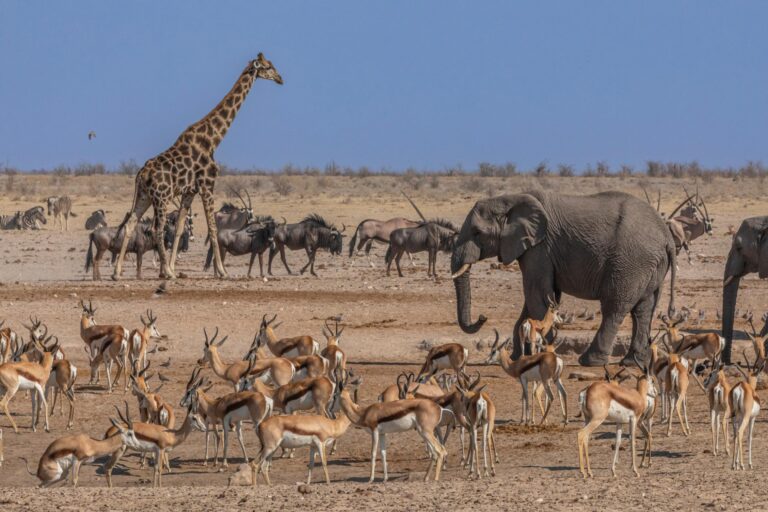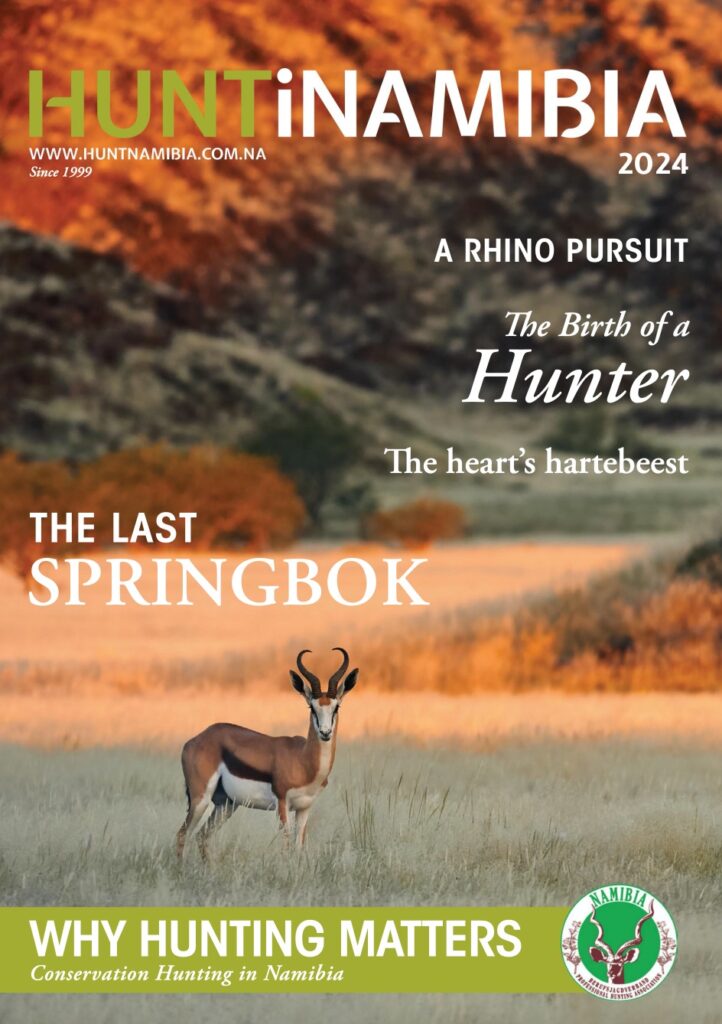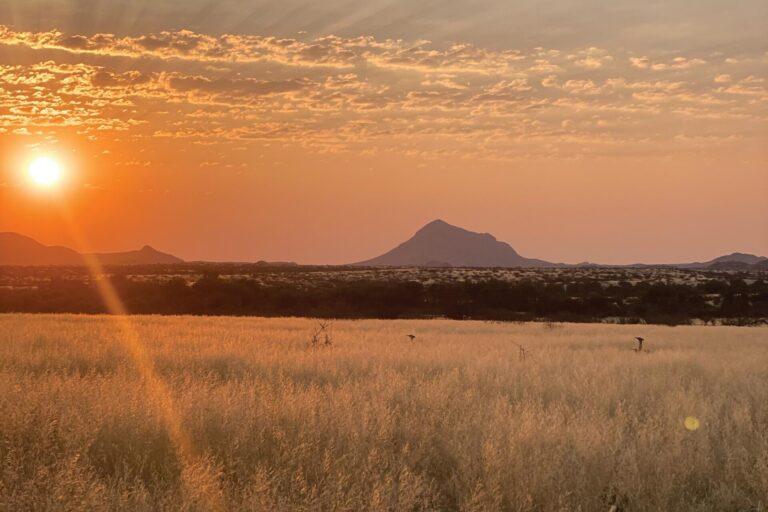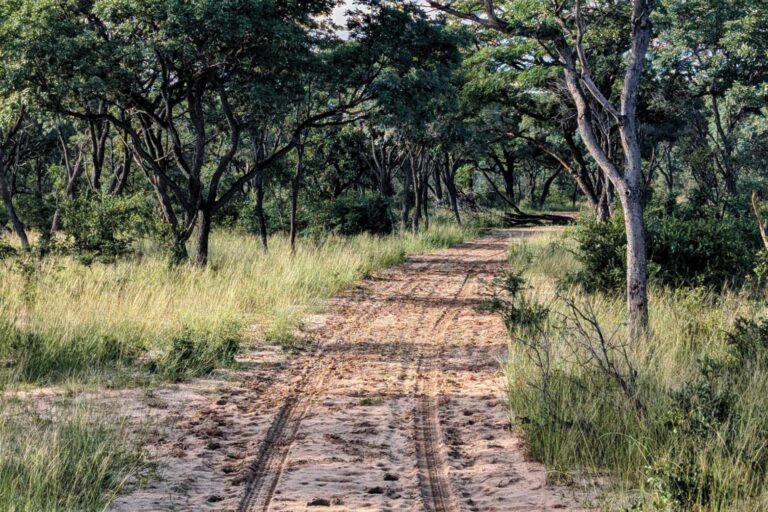I grew up hunting.
Since I was one year old we spent months on end in the big game hunting concessions of my father, surrounding Khaudum National Park. It was a simple life from a basic tented camp giving me and my siblings one of the most carefree childhoods imaginable and something that nowadays belongs to times gone by.
For as long as I can think I have been interested in hunting. As a child I would always play hunting games with my San companions, dragging imaginary elephants back to camp by their trunk.
For my 5th birthday I got a Daisy Gun and from there onwards I could actually hunt for something real. My first successful hunt was on a highly protected crimson-breasted shrike. My father was not happy and explained to me that this species was off-limits. Thereafter we prepared the little bird in some tin foil with onion and apple over the fire. Only hunt what you want to eat, or eat what you hunt – an important lesson for a young hunter.
My youth was mainly spent hunting – in all possible ways – whether in the hunting concession or on my father’s property in the Erongo Mountains. My main quarry in the mountains soon became the rock dassie. Although I did not eat all the dassies I shot (they were given to the Damara builder on the farm at the time), I collected their quite impressive little “tusks”. I still have my “world record” trophy hanging on my childhood bedroom wall.
I soon upgraded to larger animals, hunting a magnificent springbok ram in the Doro !Nawas concession on a trip with my father and my mother’s father when I was 10.
Not before long I was in charge of hunting ration meat for the farm workers, especially when my father was in the big game concessions and my mother came down to check on the farm every few weeks. I was in a very “blood-thirsty” season of my hunting career and could not get enough, also making my first conscious mistakes in hunting. In retrospect a very valuable time in my development as a person and as a hunter.
When I was 17, my father gave me the great opportunity to hunt a “non-trophy” elephant at the end of the hunting season. To this day, it is one of the toughest and best hunting experiences I can remember.
It was late in November and an incredibly taxing humid heat – the first rains of the season had just started – was ever-present. We were hunting in the Nyae Nyae Conservancy and spent a few days exploring the south of the hunting concession, without finding a suitable bull.
On the second last day we picked up the tracks of an elephant bull at the waterhole near the camp. We first suspected that he would be moving east, and while the San trackers followed the tracks, my father and I wanted to cut off a bit of the distance and drove to where we assumed the bull would cut across the old cutline going north. The bull, however, soon after leaving the waterhole had turned in a northerly direction towards Khaudum National Park (some 20 km to the north). We left the truck at the cutline and followed the tracks. The heat was brutal and my feet were covered in blisters from the previous days when I broke in my knock-off vellies. The elephant moved in a general northerly direction, but in half circles as he was feeding on tubers or looking for a suitable spot to catch some sleep. I still remember how I had a bad backache from all the walking, probably because of the uncomfortable, hard shoes. Every few kilometres I would have to stretch and bend my back to keep the pain bearable. But I never thought about giving up. Late in the morning we approached a clayey belt where the vegetation was lush and thick. It cut from east to west through the otherwise mostly monotone bushveld and we suspected that the bull might spend the hottest hours of the day in the cool shade there. However, he walked almost straight through the belt and into the open bushland again. Maybe the overcast weather was enough protection from the sun for him. The bull also went past the islands of purple-pod terminalia thickets that dotted the landscape. We already feared that he might be in the national park, when suddenly we finally caught up with him less than 2 km from the park’s border. The thunder of the .416 I was carrying and my father’s .404 brought the old bull to the ground, and an end to an unreal pursuit. I was exhausted by the hunt, and yet also incredibly humbled by this experience. What a hunt.
It was not over yet, though. We were miles from the car. The old cutline was relatively close and my father told me to go back with one of the San and fetch the car, while he would wait for me with the other trackers.
The 45-minute brisk walk to the cutline through the somewhat diverse bushveld was still enjoyable, but the walk south along the cutline for kilometres on end got more tiring with every step. Kan//ah, the tracker accompanying me, had already used up all his water; I still had about 3/4 left in my bottle. I tried to hold out as long as I could but after an hour or so along the cutline, I had to take a few sips. I also offered some to Kan//ah, but he politely declined. After another hour I drank again – we were just passing the village of N!otscha-Kai lying about a kilometre off the cutline – and again offered some to Kan//ah, who declined again. I finished my bottle as I knew that we were now closer to the car than to where the others were waiting, and that there was a 25-litre jerry can of water on the truck, where the tracker could finally also drink without feeling bad. The last stretch was excruciating for me but I was not going to start complaining now. At some point we reached the hunting vehicle and I poured water over my head and gulped down as much as I could. Kan//ah just stood on the back of the vehicle still not taking a sip. Incredible. Another lesson learnt.
With the car we reached the others in no time, and now at last Kan//ah enjoyed a few mouthfuls of water together with the other trackers.
This memory is a big part of what made me as a hunter and human being. I learnt many things spending time out in the bush with great hunters and while pursuing or tracking game. I could relate many stories of a hunting career still in its fledgling stage. However, that would go beyond the scope of this essay and of what I am trying to bring across.
In my early twenties I had a mind shift in my view on hunting. It became more and more about the experience, about being out in nature, observing everything around me and learning as much as possible from what I saw. The act of killing – usually the penultimate moment, the completion of a hunt – moved way back in priority. At times I even questioned whether it is morally right to hunt, to kill an animal. However, I always came to the conclusion that hunting and killing is justified – not that it needs to be, it is part of human nature – and that it is okay to kill an animal (if done ethically and sustainably). For me, hunting is not about enjoying killing or collecting a trophy (although I do like the memories linked to a set of beautiful horns). I enjoy spending time in nature, truly experiencing all the facets that creation has to offer. And sharing this time with like-minded people. Maybe even helping such companions to bag an old, past-prime trophy-carrier and enjoying meat grilled on the campfire.
Hunting truly is a school of life and because of that is so vitally important for society – not necessarily for each individual, but for the human community as a whole.
Hunting, in its broadest possible context (second only to my belief, which I also challenged at times but never lost), has been the only constant in my life and has carried me through many challenging or trying times. Hunting provides the hunter with the purest form of living and being closest to creation. Hunting really matters.





